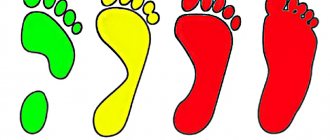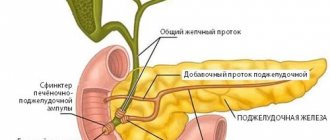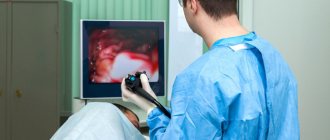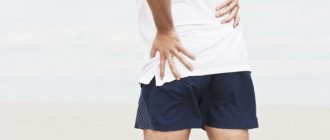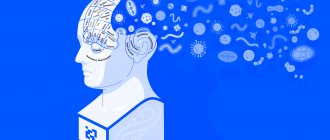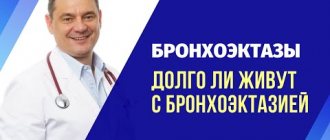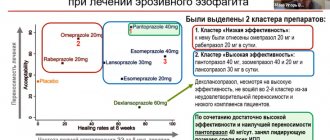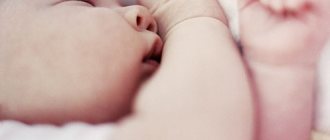- Home >
- Clinic services >
- Neurology Clinic >
- Scheuermann-Mau disease
Scheuermann-Mau disease (dorsal juvenile kyphosis) is a progressive kyphotic deformity of the spine, mainly occurring during the period of intensive growth at the age of 10–16 years.
The disease occurs in 1% of adolescents, and is equally common among both boys and girls. The main clinical manifestation of Scheuermann-Mau is pathological kyphosis of the thoracic spine, resulting from a wedge-shaped deformation of several vertebrae of this section (most often 7, 8 and 9), in which the anterior part of the vertebral body decreases in height.
Such a change in the shape of adjacent vertebrae leads to curvature of the entire spinal column at the back and the formation of a hump. —>
At the MART clinic on Vasilyevsky Island
- Evidence-based medicine
- Experienced specialists
- Monitoring of patients for 6 months.
- Diagnostics (MRI, ultrasound, tests)
- Daily 8:00 – 22:00
Make an appointment
The human spine has four moderate natural curves, which in a healthy state allow you to evenly distribute vertical loads across the entire spinal column, help maintain balance and effectively absorb shocks and shocks that occur when walking, running, and jumping.
With Scheuermann-Mau disease, the angle of thoracic kyphosis, which is normally from 20 to 40 degrees, increases to 45–75 degrees. This leads to a significant redistribution of loads on all parts of the spine and entails the development of many complications.
Reasons for the development of the disease
The causes of Scheuermann-Mau disease are still being studied. Scientists have found that in most cases the pathology is genetic and is inherited in a dominant manner. In addition to the hereditary theory, there is an opinion that the development of the disease is influenced by:
- heavy physical activity;
- spinal injuries;
- hormonal imbalance;
- chondropathic kyphosis - accompanied by inflammation of muscle fibers at the points of attachment to the vertebrae;
- Kümmel's disease - is a complication of previous injuries, manifested by inflammation of damaged vertebrae;
- chondropathy – during the pathological process, destruction of the vertebral bodies occurs. They become wider, shorten in height, and protrusion of the spinous processes is observed.
Among the predisposing factors, there are conditions in which necrosis and destruction of the bone tissue of the vertebrae occurs:
- bacterial and viral infections;
- anomalies in the formation of the musculoskeletal system;/p>
- decreased mineralization of bone tissue caused by impaired mineral and vitamin metabolism.
The combination of several factors leads to the rapid development of pathological changes and irreversible conditions of the spine.
How much does it cost to treat a disease?
The price of treatment is an issue of interest to most medical tourists. It should be noted that completing a treatment course in Israeli clinics makes it possible to save about 30% of the amount required in Western European countries, and up to 50% in the USA.
Advantages of treatment in Israel
- Qualified experienced doctors.
- Availability of modern diagnostic and treatment equipment.
- Knowledge of modern conservative and surgical techniques.
- High level of comfort.
- Loyal prices.
Complete treatment is necessary to stop the progression of the disease and restore the ability to live an active life. Don’t hesitate, choose a clinic and undergo therapy under the guidance of highly qualified specialists.
- 5
- 4
- 3
- 2
- 1
(1 vote, average: 5 out of 5)
How does Scheuermann-Mau disease occur in children?
The occurrence of Scheuermann-Mau osteochondropathy in children is associated with a period of active growth. Lack of vitamins, phosphorus and calcium leads to decreased mineralization and bone density. In children, these mechanisms lead to early osteoporosis.
The pathogenesis of degenerative-dystrophic changes is influenced by improper or insufficient development of the muscle fibers of the back. An insufficient muscular frame provokes a change in posture. During this period, the child's spine and vertebrae are most susceptible to traumatic injury.
Why does Scheuermann-Mau disease develop in adults?
In adult patients, Scheuermann-Mau disease is a consequence of:
- cervical myelopathy;
- osteoporosis;
- intervertebral hernial protrusions;
- deforming spondylosis;
- spondyloarthrosis.
As a rule, the first signs of pathology appear at 30-40 years of age. Chronic myelopathy is manifested by impaired functionality of the spinal cord, resulting in changes in muscle tone and disruption of the functioning of internal organs.
As a result, deformities of the vertebral bodies in the corresponding part of the spine, spondylodysplasia, are detected. Stenosis of the intervertebral foramina is associated with the formation of osteophytes and the deposition of calcium salts along the anterior longitudinal ligament. The radicular vascular system is significantly affected. Multiple kinks and occlusions of blood vessels lead to disruption of trophic processes in the vertebrae.
Signs of illness
The diagnosis in children is established at the age of 12-17 years. Until this period, Scheuermann-Mau disease is asymptomatic. The reason to consult a doctor is a visible change in posture.
The specific symptoms of Scheuermann-Mau disease depend on the region in which the vertebrae are damaged and the degree of involvement of the spinal cord in the pathological process. In childhood, the following are objectively determined:
- peripheral paresis or paralysis;
- muscle tone;
- decreased reflexes from damaged areas;
- central paralysis or paresis with increased muscle fiber tone;
- impaired sensitivity at the level of damaged vertebrae;
- dysfunction of the pelvic organs.
Over time, signs of a hump appear and the shape of the chest changes.
In older patients, the pathology manifests itself with specific symptoms
- aching, nagging pain of a constant nature in the thoracic or lumbar spine, tending to intensify in the evening and at night;
- feeling tired, lethargic;
- difficulty performing any movements;
- pain in the heart area;
- respiratory dysfunction;
- asymmetry of the back muscles;
- deformation of the legs.
Survey
- The main distinguishing feature of patients with Scheuermann's disease is thoracic kyphosis.
- Often, along with kyphosis, the patient is found to have cervical or lumbar hyperlordosis.
- Cervical lordosis can be increased with head protraction. The shoulders are mostly directed forward.
- These disorders may be accompanied by mild or moderate scoliosis.
Patients with Scheuermann's disease usually have well-developed muscles, in contrast to patients with postural kyphosis.
The examination consists of:
- Posture Assessment: Body position is assessed from the front, back and side.
- Neurological screening: in rare cases, compression of the spinal cord along the posterior surface of the vertebral bodies may occur at the site of greatest curvature. This may result in symptoms of impending paraplegia with clonus and hyperreflexia.
- Adam's forward-bend test: Scheuermann's kyphosis may be accompanied by scoliosis.
- Muscle Shortening Test: In Scheuermann's disease, the following muscles may be stiff: the pectoralis major, hamstrings, suboccipitals, and hip flexors. Contractures in the shoulder and hip joints are possible.
- Range of motion in the joints of the lower extremities and spine.
- Muscle Strength Test: The strength of the abdominal, core, trunk extensors, and gluteal muscles should be tested.
Stages of development of Scheuermann-Mau back disease
The degenerative-dystrophic process progresses gradually. The disease develops in accordance with certain stages, each of which has its own clinical manifestations:
- Orthopedic (latent) stage – corresponds to the age of 8-14 years. There are no specific symptoms. A child may complain of pain in different parts of the back after playing sports or heavy loads. Rarely is there a posterior curvature of the thoracic spine or a smoothed lordosis (anterior curvature) in the lumbar spine. Sometimes there is a noticeable limitation of movement in the damaged part of the spine;
- Early neurological manifestations correspond to the age of 15-20 years. It is characterized by pain in the thoracic or lumbar spine, which is sudden or chronic. Unpleasant, painful sensations appear in the abdominal muscles, which is a consequence of compression of the spinal nerve roots;
- Late neurological complications – registered after 20 years. Manifest in the form of pain in the chest or lower back of a constant nature. Irradiation of pain occurs along the corresponding spinal nerves and is accompanied by impaired sensitivity. In older patients, atherosclerotic lesions of the aorta and its branches appear.
Physical therapy
Non-surgical treatment
For a child or adolescent with the initial stage of the disease, it is enough to undergo an examination by a physical therapist, who will assess the condition of the kyphotic arch. The patient should also be counseled about body position and types of activities that are beneficial to him. This can be limited to until the patient’s kyphosis begins to worsen or the pain intensifies.
- In some children, the disease regresses over time without leaving pathological kyphosis or creating long-term problems.
- Others may permanently have a slight thoracic kyphosis, which, however, will not prevent them from functioning normally and will not cause pain or other problems.
Your doctor may recommend brace therapy along with exercises.
- The corset is most effective during the period when the child’s skeleton is not fully formed, which usually occurs by the age of 14.
- Ideally, a corset should be started at puberty and worn for two years. After the final maturation of the skeleton, the corset may not be worn.
- Most doctors prescribe the Milwaukee corset, which is made of molded plastic. It corresponds to the size of the waist and serves to support the shoulders and gradually straighten the chest arch. The corset has two soft straight plates aligned along the spine. The pressure from these plates straightens the spine. A corset will not eliminate a kyphotic arch if the spine is fully formed. In addition, the corset is useless for severe curvatures with an angle of more than 75 degrees.
Corset therapy
- Patients under 15 years of age usually wear corsets all day, removing them only when showering.
- The brace should be adjusted regularly to improve the kyphotic deformity.
- When the situation has improved sufficiently, the corset can be worn part-time (8-12 hours a day). So it should be worn until the skeleton is completely formed, which usually happens by the age of 14-15.
- Sometimes wearing a corset also helps adults, despite the fact that their skeleton has long been formed. We are talking about partial correction of kyphosis and pain relief. Corset therapy is also recommended to reduce pain in cases where surgery is not possible.
Physical therapy is recommended in combination with brace therapy
- It appears that exercise enhances the benefits of wearing a brace by strengthening the muscles, which helps align the spine.
- Recommendations from physical therapists regarding maintaining posture and beneficial activities are of great importance.
- Physical therapy is recommended even if the patient no longer wears a brace, as it helps manage any pain and teaches how to maintain proper body posture. In addition, physical therapy helps identify and treat any muscle imbalances that may be placing mechanical stress on the spine.
Doctors may prescribe anti-inflammatory drugs to relieve pain. Younger patients usually take these drugs for a short period of time and combine them with other treatments. Adults who experience persistent pain sometimes need long-term use of anti-inflammatory drugs.
According to Lowe, bracing is almost always successful if the kyphosis angle is between 55 and 80 degrees and if the diagnosis is made before final skeletal maturation.
- Corset therapy has several disadvantages. One of them is that the longer the brace is used, the higher the likelihood of low back pain.
- Compliance among teenagers is usually low.
Other corsets were also tried, in particular soft corsets. However, they have not shown effectiveness: a soft corset is not able to correct gross deformity.
Other Aspects of Physical Therapy
Kyphotic posture can be corrected using the Schroth technique
Examples of exercises using the Schroth method
Patient education includes the following
- Extension based stretching/muscle strengthening program.
- Hamstring stretch.
- Improvement of postural and mechanical components in activities of daily living.
- Optimal use of corset plates.
Working with posture
- Emphasis on stretching the hamstrings and pectoralis major muscles; strengthening and improving the functions of the trunk extensors.
- The exercises will be effective provided that appropriate rigidity has not yet been developed in the thoracic spine and when the sagittal arch is not yet too high (Cobb angle - from 44 to 55 degrees).
- Maintaining posture in standing and sitting positions.
Exercises
- Flexibility exercises - to relieve contractures in the lower extremities (for example, hamstrings).
- Strengthening the core, back extensors.
Sport
- Sports where extension occurs are shown: gymnastics, aerobics, swimming, basketball, cycling and hyperextension exercises.
- Sports involving jumping and excessive functional use of the back are not recommended.
Postoperative physical therapy
Must include breathing exercises, mobilization and muscle strengthening exercises.
Scheuermann's disease in adults
- The approach to treating the disease in adults is different, since the problem of pain comes to the fore, not aesthetics.
- The preferred method of treatment is functional rehabilitation in an outpatient setting. Much less often, the patient is referred for surgery or prescribed to wear a corset.
There is another treatment regimen. Its main principles are described below:
- 1) Elongation and development of the trunk.
- 2) Symmetrical sagittal extension; exercises should be performed on both sides of the body (right and left): Bilateral expansion of the chest in the posteroanterior direction to reduce thoracic hyperkyphosis.
- Bilateral lumbar expansion in an anteroposterior direction to reduce hyperlordosis in the lumbar region.
- Shoulder Traction: Traction increases chest opening and corrects the spine.
- Breathing correction: allows the patient to feel expansion in problem areas. The purpose of breathing exercises is to open the chest in the back to front and lateral directions.
- Muscle activation through increased tension: to achieve the best possible correction results; muscle balance, stabilization and to enhance proprioceptive afferentation. It also helps to build the correct body diagram in the mind.
- This intensive physical therapy combined with wearing a corset (such as SpinoMed) is a successful treatment regimen for Scheuermann's disease in adults.
It should be noted that more clinical studies are needed to evaluate the effectiveness of conservative treatment (especially manual therapy) and various physical exercises. The results need to be compared with the results of wearing a corset, and the effectiveness of these conservative instruments with the simultaneous use of corsets needs to be studied.
Consequences of the disease
Deformation of the spine entails displacement of internal organs. If the disease affects the thoracic spine, the blood vessels are compressed, lung function is impaired, and the anatomy and function of the heart changes. Coronary heart disease often occurs against the background of Scheuermann-Mau disease.
When the lumbar spine is damaged, severe dysfunction of the pelvic organs develops. The most severe complications are recorded from the intestines and genitourinary organs.
Diagnosis of Scheuermann-Mau spinal disease
The diagnosis of Scheuermann-Mau disease is approached comprehensively, since it is often combined with other diseases of the spine - scoliosis, Schmorl's hernia, spondylolysis. The examination program includes:
- X-ray of the spine;
- MRI;
- electromyography;
- electroneurography;
- General and biochemical blood test.
If an infectious origin of the disease is suspected, a blood test is taken for sterility and a culture of the cerebrospinal fluid is performed.
Characteristic signs of Scheuermann-Mau deformity on x-rays:
- Severe hyperkyphosis exceeding 40°.
- Wedge-shaped change in the anterior surface of the vertebral body at the level of 5°.
In some cases, consultation with a geneticist, oncologist, or vertebrologist is required.
Treatment of Scheuermann-Mau disease in Naberezhnye Chelny
Specialists at the Center for Restorative Medicine in Naberezhnye Chelny successfully treat Scheuermann-Mau disease using conservative methods. After examination and determination of the degree of change in the kyphotic arch, an individual therapeutic program is drawn up, which includes:
- wearing a special orthopedic corset is effective in children, especially with the onset of puberty;
- physiotherapy;
- swimming;
- massage;
- manual treatment;
- mud therapy;
- reflexology;
- electrophoresis;
- acupuncture;
- phonophoresis;
- kinesiotherapy.
If indicated, painkillers, anti-inflammatory, and nootropic drugs are used.
When the first signs of a change in posture or pain of unknown origin appear in the chest or lower back, you should consult a specialist. Only a doctor can correctly diagnose the pathology and prescribe adequate treatment. In the case of Scheuermann-Mau disease, self-medication leads to worsening spinal pathology. The clinically serious condition of the patient requires surgical treatment with the installation of metal structures and resection of vertebral sections.
Traumatologists, orthopedists, rehabilitation specialists and physiotherapists at the Center for Rehabilitation Medicine make every effort to restore the quality of life of patients. The cost of services of clinic specialists is provided in the price list
Methods for diagnosing the disease
A comprehensive examination required to make a diagnosis and develop a treatment regimen in Israeli clinics requires no more than three days.
- The first day
- Second day
- Day three
Upon arrival at the clinic, the patient sees the attending orthopedist.
At the appointment, the doctor examines the medical history, asks the patient in detail about the symptoms that are bothering him, and collects an anamnesis. During the consultation, the patient is prescribed the necessary examinations. On this day, the examinations indicated in the list of appointments are performed:
- radiography of the spine (the main method for diagnosing the disease);
- computed tomography (CT) and magnetic resonance imaging (MRI) of the spine - these methods are prescribed when neurological disorders are detected in a patient and allow a detailed assessment of the condition of bone structures and soft tissues;
- electromyography;
- electrocardiography (ECG);
- echocardiography (ultrasound examination of the heart).
- If a patient has symptoms characteristic of cardiac pathologies and pulmonary dysfunction, he is referred for consultation with a cardiologist and pulmonologist.
The results of the examinations are reviewed by a medical commission, which includes the attending physician and highly specialized specialists. Doctors determine the diagnosis and prescribe treatment appropriate for the patient.
